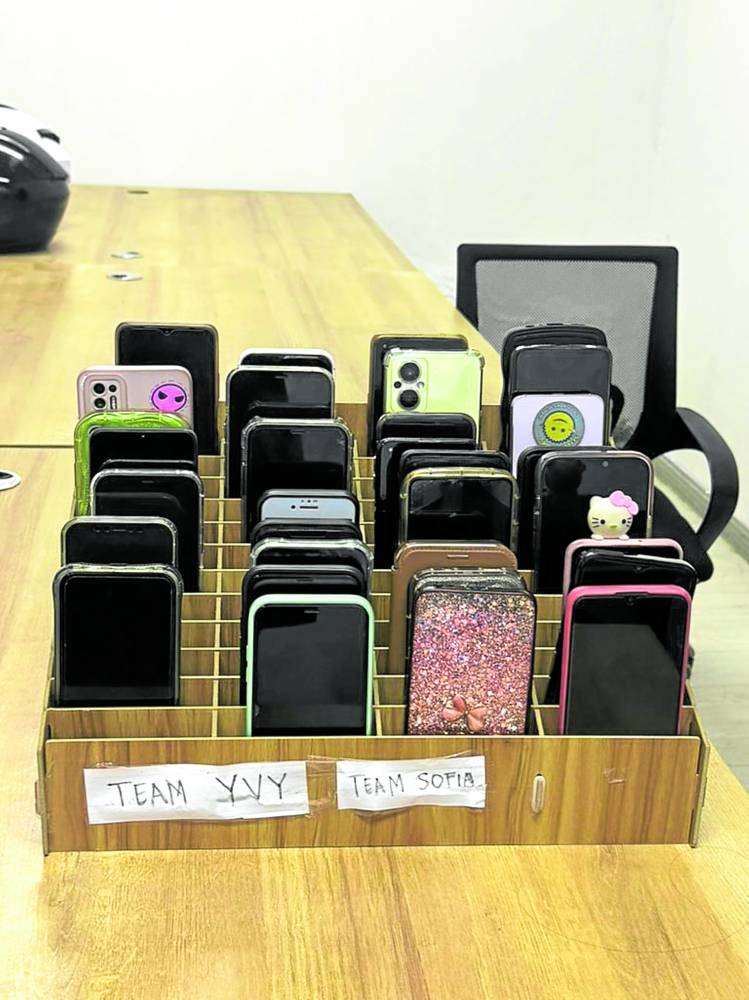
PHONE STORAGE Mobile phones are found during a raid of an online scam office near the Senate in Pasay City in this file photo taken in October 2024. Photo from the PAOCC
MANILA, Philippines — Syndicates have found a new technique to scam digital wallet users by incorporating links in text messages, an official of the Department of Information and Technology (DICT) said on Wednesday.
DICT Undersecretary Alexander Ramos, executive director of the Cybercrime Investigation and Coordinating Center, said that remaining Philippine Offshore Gaming Operators (Pogo) scam centers have started proliferating messages in the guise of legitimate advisories coming from e-wallets.
READ: Confidence in e-wallet safety is put to the test
“We have moving targets, this is what we call IMSI catcher that syndicates use. This is a particular device that is smuggled into the country,” said Ramos in a mix of Filipino and English during a media forum in Malate, Manila.
Ramos explained that IMSI catcher is a text blaster on the move that sends messages and takes over the signal. He said that it does not need sim cards and can target registered phone numbers.
Ramos said that they detected this new technology in different areas such as Quezon City, Makati and Manila, where he said that he personally experienced receiving a scam message.
“This is not a fixed transmission, this is a moving transmission from one location to another. So after analyzing the type of content, type of signal, in cooperation with the telco, we saw an operating unregistered device with the NTC [National Telecommunications Commission],” Ramos added.
Ramos also said that the agency has predictive tools and several sensors around the country to detect the movement of the scamming technique.
The DICT official noted that the syndicates are using this new approach because of the long holiday season in the country where many Filipinos who are not aware of the new ploy may be susceptible to scamming activities.
“This will be a long period to scam Filipinos who are not informed to not click links in alert messages,” he warned.
When asked how the scammers can steal money from digital wallets by incorporating links in text messages, Ramos said that there might be potential keyboard loggers that can detect and monitor information fed by typing in the keyboard.

